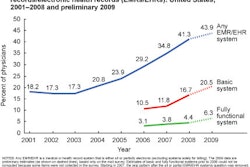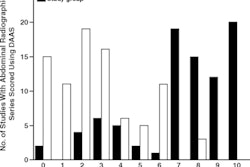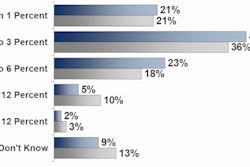A software glitch that led to the display of incorrect patient data has resulted in the shutdown of a data exchange portal that linked information systems operated by the U.S. Department of Defense (DoD) and the Department of Veterans Affairs (VA).
In announcing the March 1 shutdown, the Veterans Health Administration (VHA) reported that the glitch was first reported by a sharp-eyed physician using the VA's remote data viewing system, who saw a prescription for an erectile dysfunction drug residing in the DoD electronic medical record (EMR) of a female military veteran. A subsequent investigation uncovered at least two software bugs in the electronic portal linking these two systems.
A fact sheet about the problem dated March 9 provided to AuntMinnie.com by a VA media representative confirmed that a second problem was identified after the first software bug had been fixed. While it is possible for VA medical personnel to obtain the military health records of their patients through conventional means, and no clinical harm to a veteran has been reported as a result of inaccurate medical data, this incident demonstrates the potential vulnerability of verifying the accurate transfer of electronic records among different medical systems.
The errors that are occurring may or may not be reproduced when a query from the VA's computerized patient record system (CPRS) is made to the Armed Forces Health Longitudinal Technology Application (AFHLTA), the repository of millions of electronic medical records of all active duty military personnel and their families, formerly known as the Composite Health Care System II (CHCS II). When working properly, and the remote data view button is activated through CPRS to AFHLTA, authorized medical staff at a VA medical center may view in real-time the military medical records of the veteran they are treating.
The first problem was identified as a glitch in the Bidirectional Health Information Exchange (BHIE) electronic portal. It presumably had not been identified earlier because the problem occurred intermittently and would not necessarily replicate itself. The VA stated that the way it was caught was that a VHA employee made a hard-copy print of the screen display. The physician who saw the error then contacted the DoD to determine if the prescription for the erectile dysfunction drug, vardenafil, had been ordered or dispensed to the female patient. Efforts to replicate the error with new remote queries were unsuccessful.
The Veterans Health Administration Warning System issued a patient safety advisory on February 22, and followed that up with a patient safety alert on March 3. The alert advised that physicians querying the DoD database using either the remote data view button of CPRS or VistAWeb, the VA's intranet portal to EMRs through CPRS, might receive results with either no data, a subset of data, incorrect data, or the complete, accurate data, and that the data displayed may or may not be replicated with a new query. To date, the problem has been identified with queries about prescription drugs, laboratory tests, and radiology reports.
Additional information was not provided, and currently is not yet available to the public.
The alert stated that no known problems had been identified making remote queries within the internal VHA VistA multimedia EMR system, which contains print content, DICOM diagnostic images, and non-DICOM images, such as digital photos.
As of March 1, all access to DoD electronic records through CPRS and VistAWeb was disabled, and the date when the system capability would be restored was not known, according to the alert. Chief medical officers at each VA healthcare facility were asked to "institute contingency plans for requesting DoD medical information using telephone, fax, paper, or other alternative methodologies" by March 12.
What happened
Roger Baker, the VA's chief information officer, stated that older code in the system became stressed at peak periods when clinicians were making the highest number of queries, according to an article by Bob Brewin in nextgov.com, the media source that broke the story on March 4.
During peak periods, the system did not clear out a memory chase, resulting in memory leaks "so that information from one patient is presented as it is from another," according to Baker. The VA fact sheet explained that this was caused by multiple instances of a unique identifier because of an improperly set global variable.
The fact sheet stated that the software bug was identified in one of the oldest sections of the Bidirectional Health Information Exchange code, and was written in a software language that is no longer used or supported. The VA was able to locate the original programmers, who isolated the problem and eventually fixed it. Nextgov.com reported that the VA intended to bring the BHIE back online on March 9.
However, as the system was being tested, another problem was identified, according to the VA. This second software flaw is generating incomplete data returns and proving more difficult to repair.
In its fact sheet, the VA stated that the problems with the BHIE emphasize the importance of creating a standards-based health information exchange. The root cause of the current problems is the dependence on a custom-built system implemented years ago that was never designed to meet current demand, the VA noted.
By Cynthia E. Keen
AuntMinnie.com staff writer
March 12, 2010
Related Reading
New military electronic records to be model for U.S., April 10, 2009
Hospitals need to scramble on stimulus fund goals, March 3, 2010
Obama stimulus package allocates $20 billion to healthcare IT, February 19, 2009
Copyright © 2010 AuntMinnie.com



















